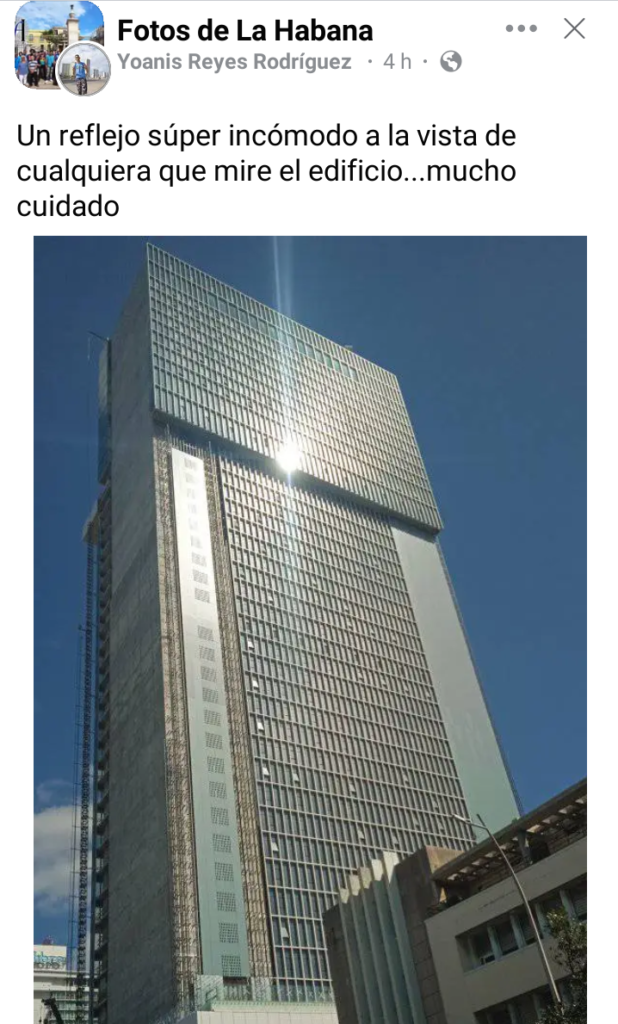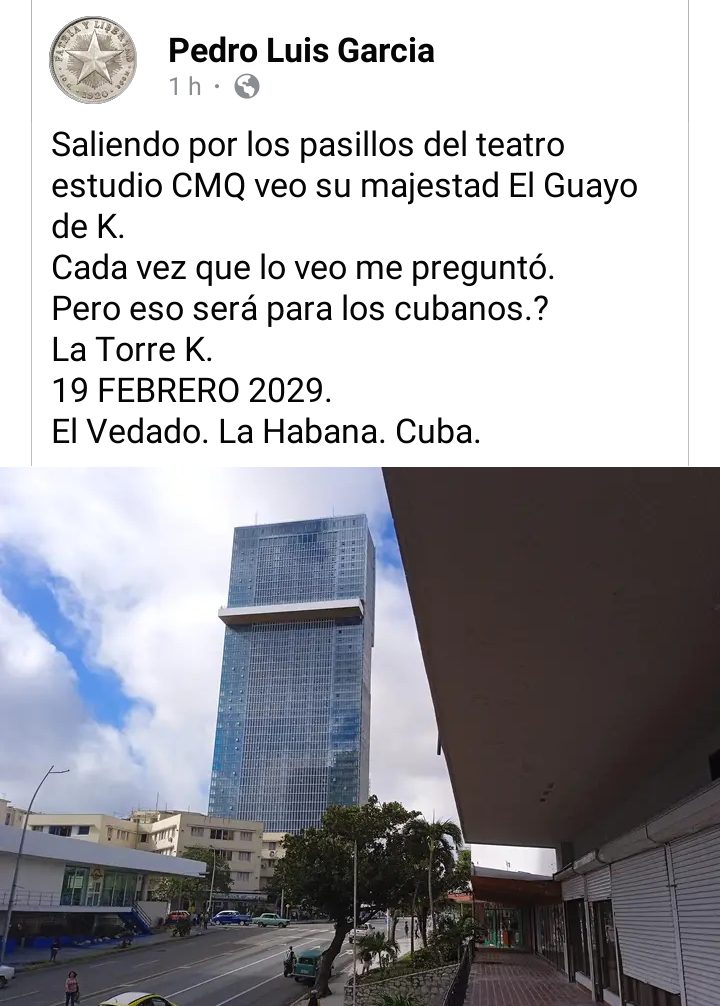HAVANA, Cuba. – Even Ignacio Ramonet himself —an “imported ideologue” among the most unconditional supporters of the Cuban regime— has called it “horrible,” although they say that during the days of the Book Fair, he has been wandering around Havana apologizing for his “untimely fright” and trying to demonstrate that his “attack” against the K Tower was neither a task assigned by the CIA nor a nod to us “haters.” And it is that having managed to be shocked by those 100 hours of conversation with Fidel Castro, this time his “mettle” was not enough to withstand the ugliness of a building that does very few favors to the city, neither in beauty nor in the resources it has swallowed to rise amidst the crisis.
It’s not that opinions in favor or against the “architectural intrusion” of the K Tower are divided, but that its defenders are only a handful of mediocre folks who approved, conceived, and financed it, while its detractors are hundreds of thousands of men and women who do not need an “expert’s” explanation to conclude that the building does not fit into the urban landscape, in fact, it doesn’t even harmonize with the nearby Habana Libre hotel (or with the Focsa building), as its completely flat, unimaginative facade, covered in glass, is annoying with its reflections of the sun, dangerous in that sense, hermetic and surly with the environment —perhaps in tune with the qualities of the military guild that manages it— is like an alien spaceship that has threateningly landed on us.

Even some, greatly intellectualizing the intrusion, have gone as far as to compare it with that monolith that appears at the beginning of the movie 2001: A Space Odyssey, precisely because it is just that, a monolith amidst a wild, prehistoric, regressed environment that is meant to signify whatever anyone wants to attribute to it, good or bad. But undoubtedly, as it clumsily rises above all the rooftops of the city, it could be a monument to arrogance, a declaration of domination over all of us, mere apes surviving among the rubble and the bones of dead animals.
In short, a kind of “I built it there and like that because I feel like it,” so it becomes very easy to visualize its “gigantic dimensions” but above all its immense vulgarity in a country that becomes more vulgar by the day.

But those who “suffer” it don’t intellectualize too much the understanding of the object called “K Tower” and instead have fun by giving it fabulous nicknames, some of which can be read in various groups on social networks. In addition to the street talk, at the foot of the construction, the only possible debate takes place about the relevance of what will soon be the tallest hotel in Cuba and, therefore, the emptiest, the most useless, if things continue so poorly with respect to the tourism sector.
It is such a heated debate that, due to censorship, it does not transcend to the official press although sometimes there is no choice but to publish some negative critique that barely questions the creativity of the architects, that is, critiques that do not anger too much, but only alleviate the conscience of those that feel uncomfortable for remaining silent only because they have been ordered to be in favor, although on their own or with family and friends, they dare to call it “KK Tower” – KK being the phonetics for excrement- to what is undoubtedly, in terms of the most exquisite architecture, pure crap…

“Crap Tower” is what they begin to call it on social networks, but others have also ingeniously named it “the grater” —alluding to the roughness of that handmade, tin utensil, so used in our kitchens—; and they are also calling it the “guava bar,” due to its resemblance to our traditional guava paste dessert, two comparisons that possibly reveal the only connections to “authenticity” that the building has regarding our culture.
Perhaps even from something as far-fetched as this, these people so lacking in imagination cling to justify in a hurry the “cultural” value of the building, after all, they do it all the time even with the labels of the “enemy memes” without the slightest worry of plagiarism and lack of initiative. After all, I think they have even assumed that their entire reality is in itself the best of memes.

Let’s return to the comparisons, I have come across some grim ones where they call it “the coffin” and “the mouse trap,” in contrast with others as jovial as “the matchbox”, “the box of matches”, and even “the ration card”, because even the glassware that wraps the tower reminds us of that plastic cover (made from old plates) with which we Cubans cover the most important document of our lives, following the passport and the green card.
“Perhaps it’s even the first monument to the ration card, now that it’s almost about to disappear,” someone commented in the Facebook group “El Vedado de hoy,” but to me, the comparison to a grater seems brilliant, perhaps because, in addition to the “imaginative” shapes of the K Tower, it evokes that well-known and catchy musical creation by Arsenio Rodríguez where someone encourages Catalina to buy a grater because her cassava is going bad. And indeed, it is going bad. It’s about to rot.
ARTÍCULO DE OPINIÓN Las opiniones expresadas en este artículo son de exclusiva responsabilidad de quien las emite y no necesariamente representan la opinión de CubaNet.
Sigue nuestro canal de WhatsApp. Recibe la información de CubaNet en tu celular a través de Telegram.




